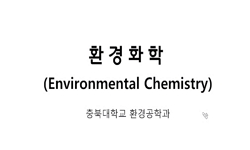Biomass production of Bifidobacterium pseudocatenulatum G4 in a milk-based medium was carried out in a 2- and 10-L stirred tank fermenters. The effects of impeller tip speed (0.28, 0.56, and 0.83 m/s) and pH control (6.0, 6.5, and 7.0) on the biomass ...
http://chineseinput.net/에서 pinyin(병음)방식으로 중국어를 변환할 수 있습니다.
변환된 중국어를 복사하여 사용하시면 됩니다.
- 中文 을 입력하시려면 zhongwen을 입력하시고 space를누르시면됩니다.
- 北京 을 입력하시려면 beijing을 입력하시고 space를 누르시면 됩니다.



Influence of pH and Impeller Tip Speed on the Cultivation of Bifidobacterium Pseudocatenulatum G4 in a Milk-Based Medium
한글로보기https://www.riss.kr/link?id=A100966950
- 저자
- 발행기관
- 학술지명
- 권호사항
-
발행연도
2007
-
작성언어
English
- 주제어
-
등재정보
SCIE,SCOPUS,KCI등재
-
자료형태
학술저널
-
수록면
475-483(9쪽)
- DOI식별코드
- 제공처
-
0
상세조회 -
0
다운로드
부가정보
다국어 초록 (Multilingual Abstract)
Biomass production of Bifidobacterium pseudocatenulatum G4 in a milk-based medium was carried out in a 2- and 10-L stirred tank fermenters. The effects of impeller tip speed (0.28, 0.56, and 0.83 m/s) and pH control (6.0, 6.5, and 7.0) on the biomass production were investigated. The growth performance in the 2-L fermenter was significantly improved when the impeller tip speed was heId constant at 0.56 m/s and the pH was controlled at 6.5. These conditions yielded a maximum biomass of $1.687{\times}10^9cfu/mL$, a maximum specific growth rate of $0.504 h^{-1}$, a biomass productivity of $9.240{\times}10^7 cfu/mL{\cdot}h$, and a biomass yield of $9.791{\times}10^{10} cfu/g$ lactose. The consumption of milk lactose resulted in the accumulation of 7.353 g/L acetic acid and 6.515 g/L lactic acid, with an acetic:lactic ratio of 1.129. Scale-up of the fermentation process to a 10-L fermenter based on a constant impeller tip speed of 0.56 m/s yielded reproducible results with respect to biomass production and cell viability.
동일학술지(권/호) 다른 논문
-
- Korean Society for Biotechnology and Bioengineering
- Oh, In-Seok
- 2007
- SCIE,SCOPUS,KCI등재
-
Antibacterial Activity of Ulva lactuca against Methicillin-Resistant Staphylococcus aureus (MRSA)
- Korean Society for Biotechnology and Bioengineering
- Kim, In-Hae
- 2007
- SCIE,SCOPUS,KCI등재
-
Lipase -Catalyzed Hydrolysis of Fish Oil in an Optimum Emulsion System
- Korean Society for Biotechnology and Bioengineering
- Byun, Hee-Guk
- 2007
- SCIE,SCOPUS,KCI등재
-
- Korean Society for Biotechnology and Bioengineering
- Byun, Hee-Guk
- 2007
- SCIE,SCOPUS,KCI등재




 ScienceON
ScienceON






